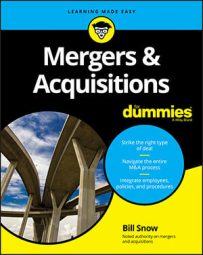A failure to communicate can be major problem and even a death knell for the M&A process. Communication problems typically come in one of three flavors:
Purposely communicating incorrect information: You may know this better as lying. Unfortunately, many people conveniently forget the benefits of honesty, which is why due diligence is a necessary part of the M&A process.
Not communicating information: This version is lying by omission. Seller has the obligation to divulge any information that may be construed as material (important).
Inadvertently communicating incorrect information: Unintentionally signaling the wrong information can weaken one side’s bargaining strength because the other side may think it has an advantage where it didn’t know it had before. But in some cases, it can prove fatal to a deal because the other side may think something is wrong and bow out of the a deal.
To keep your team of advisors on the same page, here are three tips to avoid communication breakdowns:
Establish a chain of command. One person should be the point-person when dealing with the other side. All requests for data, meetings, follow-up questions, and so on should be routed through that person.
Although this suggestion may sound like creating more busywork and bureaucratic layers, a failure to institute and follow a chain of command results in cross-communication, duplicated steps, and general frustration such that emergency conference calls and meetings become necessary to get the process back on track.
Assign specific roles and tasks to each team member and hold each member accountable for fulfilling that assigned role. Some of the specific tasks the deal-maker needs to determine are
Who makes the calls to the prospective Buyers or Sellers?
Who is responsible for structuring the deals and making sure the deal makes economic sense for the company?
Who is the final authority for green-lighting a deal? In other words, who has the final say-so?
Who is the point-person with outside advisors?
Who makes site visits?
Who leads management meetings with the other side?
Clearly deciding who does what helps ensure your side follows through with its promises, which is important for maintaining credibility with the other side.
Don’t fall into the trap of communicating only by e-mail. E-mail is a wonderful tool and should be utilized, but because it’s a passive form of communication, it may not be the best method to communicate.
It’s certainly an easy solution to call reluctance especially when a particularly difficult bit of information needs to be conveyed or when a delicate question needs to be asked, but in those situations, pick up the phone and have a conversation.
The problem with e-mail is that it doesn’t pick up on nuance or read the other side and adjust its tone or delivery. E-mail can be abrupt, and the reader may interpret unintended harshness in an otherwise innocuous note. As a result, e-mail can inadvertently derail a process. When negotiations have bogged down and both sides are merely sending e-mails back and forth, it’s time to get on the horn.
Following up a conversation with an e-mail is a perfectly acceptable method to memorialize the conversation. Delicate conversations should be handled in person or by phone, but the nuts and bolts of a deal are often best hammered out through e-mail. This way, you have a record of what the other side said or agreed to.

